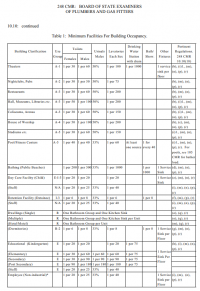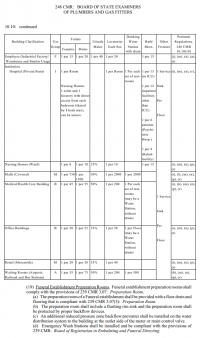Am I missing something?
It seems as though Massachusetts does not have any language in the code specifying the minimum required number of plumbing fixtures. Per my understanding, typically this information is covered in Chapter 29, with the table showing each fixture count per occupancy classification. It looks like it may have been amended? Can anyone direct me to the correct place to find this information.
It seems as though Massachusetts does not have any language in the code specifying the minimum required number of plumbing fixtures. Per my understanding, typically this information is covered in Chapter 29, with the table showing each fixture count per occupancy classification. It looks like it may have been amended? Can anyone direct me to the correct place to find this information.


